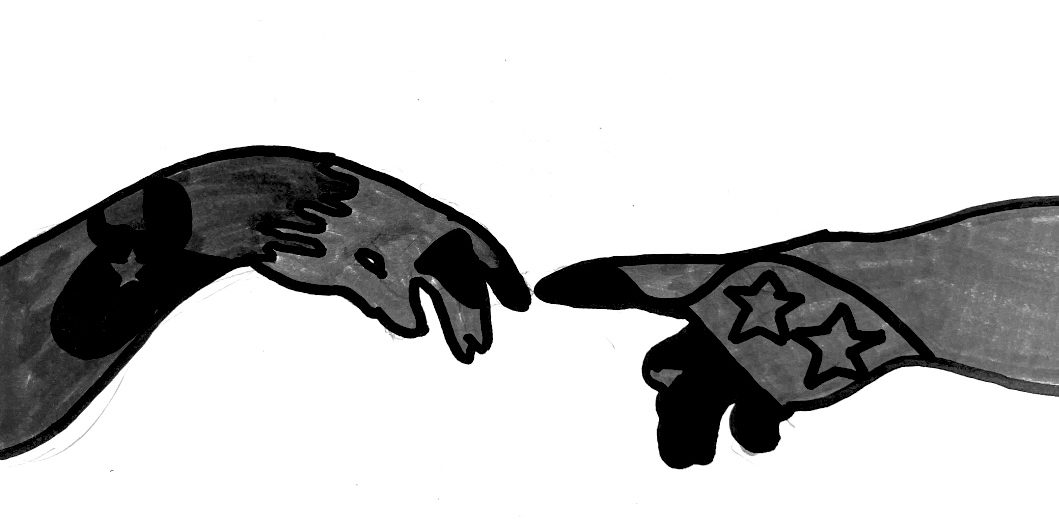Title IX, a law passed in 1972, prohibits discrimination by sex in education, from admissions to athletics and resources. However, more than 50 years since its passing, it still evokes controversies and is often ridiculed. Since its enactment, there have been great strides toward equality in educational opportunities and programs for women, but there is still much more action to be taken.
Title IX requires education facilities, such as high schools and colleges, to provide equality for all genders in recruitment, admissions, counseling, financial aid, sex-based harassment, discipline, sports funding, employment and more. The law also requires equal funding for men’s and women’s sports, especially at the college level.
 In March 2021, 49 years after Title IX was passed, college basketball player Sedona Prince posted a viral TikTok displaying the discrepancy between the men’s and women’s weight rooms for the National Collegiate Athletic Association’s (NCAA) March Madness tournament, the largest tournament in college basketball. While the men had a large room full of gym equipment, the women had just one stack of weights.
In March 2021, 49 years after Title IX was passed, college basketball player Sedona Prince posted a viral TikTok displaying the discrepancy between the men’s and women’s weight rooms for the National Collegiate Athletic Association’s (NCAA) March Madness tournament, the largest tournament in college basketball. While the men had a large room full of gym equipment, the women had just one stack of weights.
Title IX tends to receive the blame for the defunding of men’s sports teams. The ways that colleges responded to Title IX, however, was not required by Title IX, “No person in the United States shall, on the basis of sex, be excluded from the participation in, be denied the benefits of or be subjected to discrimination under any education program or activity receiving Federal financial assistance.” There is not even a requirement for dollar to dollar matching between men’s and women’s sports. This shows that Title IX does not directly indicate that colleges should defund men’s sports teams.
A common attitude throughout history is that if women are winning, men are losing. When the call for equal funding came, an easy solution was to cut, or defund, some men’s sports teams to give more money to women. Many colleges decided that adding a women’s team to make it equal would be the easy way out and in doing so, they simply cut a men’s team, even though this is not what the law called for. Nevertheless, Title IX, and women, were blamed.
However, it’s not that simple. Funding is not distributed equally between men’s sports teams. Many colleges’ athletic budgets are limited, and because of this, the majority of funding is allocated to football and basketball, as they are generally the most profitable. Due to this imbalance, smaller men’s sports, such as wrestling, lost funding after Title IX. When women’s sports were added into the picture, schools had to then stretch the budget further. The distribution of money gets more complex when it comes to co-ed, mixed gender sports. This misconception about the defunding of men’s sports does not stem from Title IX, but rather from football and other sports with extreme budgets.
Title IX – A History by Audrey Bennett
https://redwoodbark.org/wp-admin/post-new.php
According to The Marquette Sports Law Review, in 2001, the average expenditure per participant in Division I schools for football was $38,894 and $78,486 for basketball. For men’s non-revenue sports, the sports that tend to get defunded, was $8,442. For women’s non-revenue sports, which are protected under Title IX, the budget was $10,661. The majority of a school’s funding for athletics goes to Football and Men’s Basketball, not solely to women’s sports.
The NCAA has always been apprehensive about Title IX messing with football budgets, so in the first few years Title IX was enacted, change happened very quickly but once women were getting around 40 percent of the resources, it began to plateau.
Although inequality is still prominent in sports facilities, strides have been made. According to the New York Times, women’s high school sports participation has increased 1,000 percent since 1972. Similarly, according to the Women’s Sports Federation, before Title IX, one in 27 girls played sports; today, that number is two in five.
At Redwood, in 1970, two years before Title IX was enacted, there were eight women’s sports, compared to the 13 men’s teams. Unlike the women’s teams, many of the men’s teams had teams at both a junior varsity and varsity level. Comparatively, today at Redwood, there are 12 women’s teams and 11 men’s teams, a big stride for equality post Title IX.
The argument that Title IX and women in sports are killing smaller sports like wrestling is not factual. Although some men’s sports have been cut since the enactment of Title IX, it is not the law at fault. Many of the sports, like wrestling, were having teams cut even before Title IX. According to The Marquette Sports Law Review, from 1978 to 1996, the total number of sports in all NCAA divisions was 927, but the number of sports eliminated was 853. There are many reasons why sports lose teams other budgetary concerns, such as a loss in interest in the sport. The blame can’t be placed on women for this inequality, and the journey to lift them up in sports must continue.








